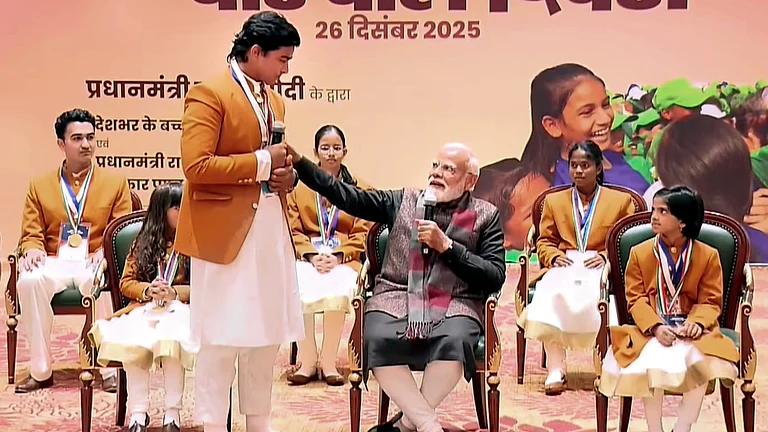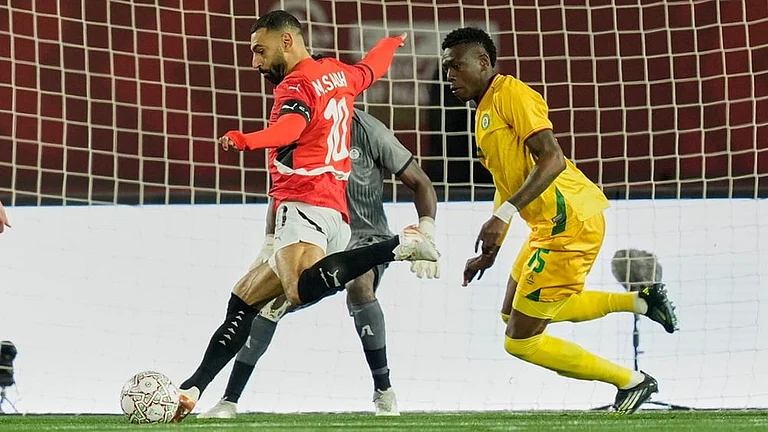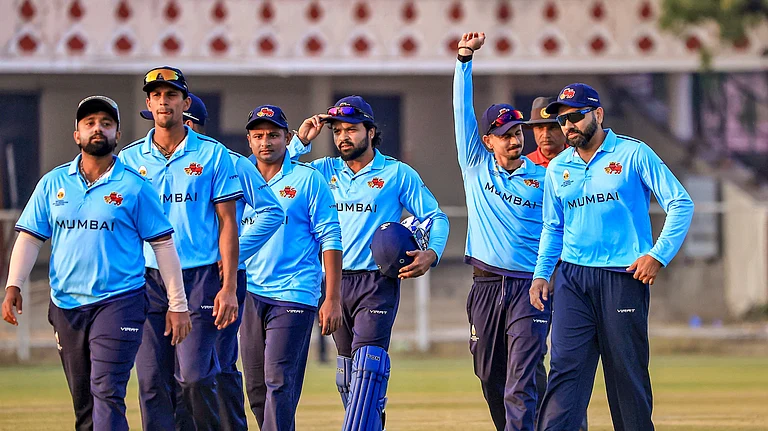Globally, cultural movements have accompanied or preceded the political advances of the Left movement—an ideology borne aloft by poets, musicians and thespians. In India, too, the Communist Party, in its initial decades, attracted leading cultural personalities of the time. Its cultural wings, the legendary Indian People’s Theatre Association (IPTA) and the Progressive Writers’ Association (PWA), founded in 1940 and 1936, respectively, are testament to the fact, as is the roster of luminaries in them. The Bengal chapter, especially, was a veritable who’s who of prominent people—theatrepersons like Bijon Bhattacharya and Utpal Dutt, writers like Manik Bandyopadhyay and Jyotirindra Moitra, poet-musicians like Salil Chowdhury and Sudhin Dasgupta, filmmakers like Ritwik Ghatak and artists like Chittoprasad.
Yet, a steady stream of creative people used to leave the party and its organisations, even as they continued to adhere to broader Leftist ideals. Ghatak and Chittoprasad had analysed why such personages started disassociating themselves from the Communist Party of India (CPI). Regimentation, lack for space for creative freedom and the party’s intent to use cultural workers merely as a tool for gathering masses in public events were a few reasons of disillusionment. They seem prophetic, when we see how, over the following decades, most leading intellectuals distanced themselves from the party. However, even after leaving, Leftist artistes and cultural activists hardly ever criticised the party, unless it was bitter intra-Left rivalry, like the one between the CPI(M) and the Naxalites.
Six decades after its height of cultural influence, in present-day Bengal, the CPI(M), which led the Left Front government for 34 years, faces more criticism from a majority of the cultural world instead of support or sympathy.
“We can safely say that the state’s cultural sphere is still dominated by individuals and groups who may be loosely categorised as non-CPI(M) leftists,” says theatre director Debesh Chattopadhyay, a self-proclaimed leftist.
Rantidev Sengupta belongs to the rival ideological camp. He edits Swastika, the Bengali mouthpiece of the RSS and once headed Bengal BJP’s intellectual cell. He echoes Chattopadhyay. “Bengal’s cultural sphere, consisting mostly of theatre groups and little magazines (literary and social periodicals) and singers, is still overwhelmingly under the influence of Marxist individuals, many of whom are critical of the CPI(M),” says Sengupta. “No ideology has managed to weaken the Marxist influence on Bengal’s cultural sphere, even though the cultural world no longer holds the same influence on the masses as during the 1950s and the 1960s, or in the more recent 2006-2011 phase. It is because of their selective protests since 2014, targeting only the Narendra Modi government, while turning a blind eye to the misdeeds of the state’s ruling party,” he adds.
The loss of influence of cultural personalities is debatable, but the CPI(M)’s loss of influence over the cultural sphere is indubitable. The 2006-2011 period presented one major example of this phenomenon; the assembly election of 2021 presented another.
Pundits agree about three landmark years: 1967, 1977 and 2006. A section of leading artists, such as Utpal Dutt, deserted the CPI(M) after the Naxalbari peasant uprising in 1967. Ten years later, the Left Front’s ascent to power created a batch of pro-establishment cultural personalities, whereas the anti-establishment pitch had hitherto been the driving force in leftwing cultural activism.
“In the 1980s, when other mass organisations of the CPI(M) were growing, the cultural wing started weakening. Some influential artists left…. Those who remained lost their influence over the masses by becoming pro-establishment,” says filmmaker Aniket Chattopadhyay.
The biggest blow the CPI(M) faced from the cultural Left came in 2006-07, when anti-displacement movements in Singur and Nandigram stirred stalwarts—they walked in rallies, addressed public meetings and created music, art and literature, protesting the forceful acquisition of farmland. Writer Mahashweta Devi, thespians Bibhas Chakraborty, Saonli Mitra, Kaushik Sen and Bratya Basu, film actor-director Aparna Sen, singer-songwriter Kabir Suman and Pratul Mukhopadhyay were prominently involved.
Mamata Banerjee was quick to grab the opportunity, accused the CPI(M) of deviating from its core ideology of protecting the interests of farmers and workers and herself adopted the slogan of ‘Jal-Jangal-Jameen’. Subsequently, no TMC event would be complete without the revolutionary songs of Salil Chowdhury, Hemanga Biswas and Bhupen Hazarika and those of Calcutta Youth Choir. Mamata kept quoting a line from a poem of leftist poet Sukanta Bhattacharya, an uncle of the then chief minister Buddhadeb Bhattacharjee, a culture-loving person.
By 2010, Barring a few luminaries like Mrinal Sen, Soumitra Chatterjee, Rudraprasad Sengupta and Tarun Majumdar, most leading Bengali intellectuals called for an end to the Left Front government.

Actor Sabyasachi Chakraborty at a cultural programme of the CPI(M)
Theatre and film actor Joyraj Bhattacharjee, who considers the Singur-Nandigram agitations as just ones, thinks that a section of the leftist intellectuals became protesters in their personal interest. “After 2011, the likes of Saonli Mitra, Bratya Basu and Arpita Ghosh became part of the new establishment and occupied chairs of influence. Why should people respond to an artist who enjoys the establishment’s favours?” he asks.
From around that time, some artistes took to describing Mamata Banerjee as more leftist than the CPI(M). Bratya Basu said it repeatedly. Poet Subodh Sarkar, who stuck with the CPI(M) even in 2011, later described Banerjee as “the mother of neo-communism”.
An analysis of the cultural content produced and circulated ahead of the 2021 assembly elections reveal how removed the CPI(M) is from the world of culture. They mostly targeted the BJP and the RSS, identifying the combine as a ‘fascist force’ incomparable to any other party, often mentioning the BJP and the TMC in the same breath.
Perhaps the biggest ‘hit’ of Leftist cultural initiatives was the song Nijeder Mawtey, Nijeder Gaan—a song and music video which launched a scathing attack on the BJP and the RSS. It featured some of the most recognisable names of Bengal’s cultural world—thespians Rudraprasad Sengupta and Arun Mukhopadhyay; actors Kaushik Sen, Anirban Bhattacharya, Riddhi Sen, Sabyasachi Chakraborty, Parambrata Chattopadhyay and Shantilal Mukhopadhyay; theatre and film director Suman Mukhopadhyay, singer-songwriters Anindya Chattopadhyay, Anupam Roy and singer Rupankar Bagchi.
All the participants do not call themselves leftists; they broadly identified themselves as ‘rongheen shilpi’ or ‘artists without colours’. But the initiative took shape due to the likes of Riddhi, Anirban and Parambrata, who call themselves leftists, but do not associate with the CPI(M). “Preventing the BJP from winning the Bengal elections was the primary aim,” Kaushik Sen had said after its release. “But the larger battle will continue till 2024,” he had added, referring to the year of the next Lok Sabha elections. The production had made the BJP livid with anger.
Other content included those released by ‘Bengal against Fascist RSS-BJP’, a platform of various groups and individuals that campaigned with the slogan of ‘no vote to BJP’. They made parodies and created original songs and music videos, highlighting socio-economic issues, especially criticising religious fanaticism and bigotry. The publication Guruchandali also produced literature, music and video content targeting the BJP. Fiddler’s Green, a folk band, created an ‘anti-fascist’ song, Dike Dike Hao Hushiyar. Several groups made copies of the Italian protest/anti-fascist song, Bella Ciao.
The theatre group Thaw performed their anti-NRC street play, based on Samaresh Basu’s short story Adaab, across the state; another group, Jana Gana Mana, did the same with their play Indurkol (Rat Trap), against the CAA and NRC. Drishyantar theatre group’s play Ghorey Firbey Prahlad, which deals with the crisis of migrant workers, was also staged at many places.
The CPI(M), needless to say, was not happy with all this, fearing that the TMC, being the strongest anti-BJP force, would become the default beneficiary of the campaigns of the non-CPI(M) Left.
The CPI(M)’s main cultural campaign was called Halla Gari--a group of activists clad in T-shirts and jeans and carrying guitars, percussion and the red flag, who travelled from one assembly segment to another, staging street plays, performing songs and raising slogans like ‘no more this BJP, no more this TMC’. Their stock in trade was a set of parodies of six popular songs, including Lungi Dance and Tumpa. The songs irreverently mimicked Chhappano inchi, sada chap dari (56-inch-chested, white-bearded) and Hawai choti-neel-sada sari (slippers with white-blue saree) in the same breath and used artfully coined words like ‘Bijemool’, a portmanteau that pointed at the oneness of the TMC and the BJP. One line went: “Chandni Ratey/ Didi, Modi-r Sathey/ Hobey True Love er Kotha/ CBI office-a Tey”, which roughly translates as “In a full moon night, Didi and Modi will discuss true love inside the CBI office”.
Theatre personality Sourav Palodhi, who played a part in the CPI(M)’s efforts, refuses to accept as Leftist the artistes and intellectuals who opposed the Left Front government in 2006-11. “They are not leftists. They should be ashamed for ruining the future of Bengal’s youth by stalling those industrial drives. They again united with a ‘no vote to BJP’ call. All they wanted was to ensure a TMC victory,” says Palodhi.
Two months after the election, CPI(M) state secretary Surjya Kanta Mishra admitted that equating the TMC with the BJP was wrong, and so were coinages like ‘Bijemool’ and allegations of a Didi-Modi understanding. The BJP, he said, was undoubtedly the principal political enemy. And so, the CPI(M)’s cultural products lay abandoned.
(This appeared in the print edition as "Ciao, On a Song and a Slogan")
By Snigdhendu Bhattacharya in Calcutta


























